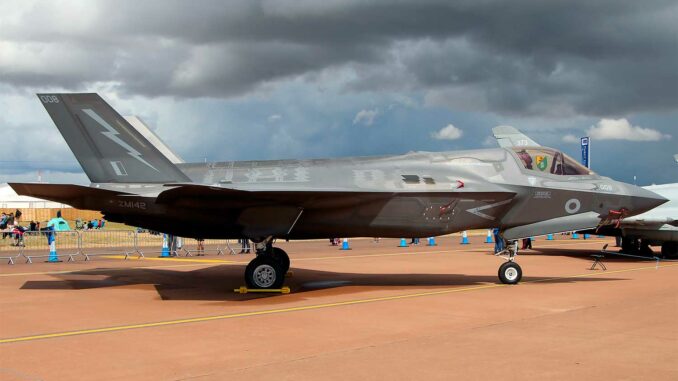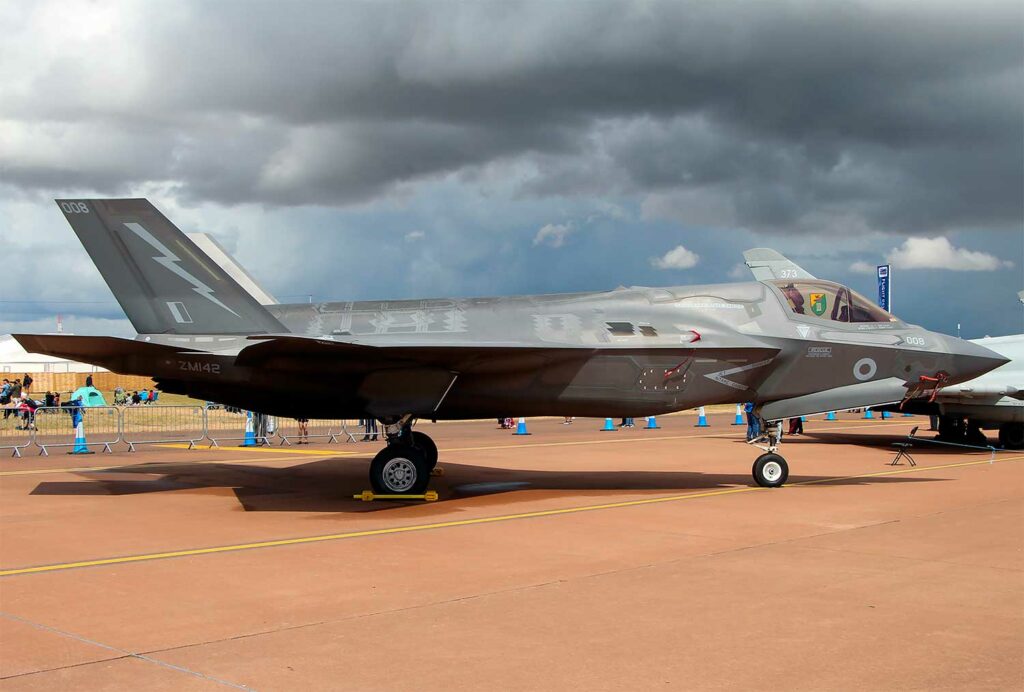
Canada maintains its schedule for 88 F-35s despite US export review, with deliveries and budget unchanged.
Summary
The Canadian government has reaffirmed that the F-35A Lightning II acquisition program is progressing “without delay”, despite Washington’s ongoing review of arms exports. A Defense Department official said planned deliveries remain on track with the original schedule, which calls for the Royal Canadian Air Force (RCAF) to receive 88 aircraft by 2034, with the first deliveries expected in 2026. The agreement, estimated at C$19 billion (approximately €13 billion) for the initial purchase, includes logistical support and integration into the program’s global supply chain. This decision reflects Ottawa’s desire to modernize its fleet, replace aging CF-18s, and align with NATO standards for fifth-generation fighter jets. The US administration has stated that no immediate changes will affect contracts already signed with allies.
Program confirmed despite the US context
The Canadian official’s announcement comes as the US is reevaluating its foreign arms sales procedures to strengthen control over sensitive transfers. This review has raised questions among several partners, but Washington has assured that existing orders, including Canada’s, will not be called into question.
Canada is the last NATO member to have officially joined the F-35 program, with a contract signed in January 2023. This decision ended a long political debate on the replacement of the CF-18s, which have been in service since the 1980s. The acquisition of 88 aircraft will enable the RCAF to renew its aging fleet and ensure the protection of national airspace, including in the Far North, while strengthening its contribution to Alliance operations.
The Defense Production Sharing Agreement between Ottawa and Washington ensures that Canadian manufacturers will continue to participate in the global F-35 program, both in component manufacturing and in-service support. This supports the continuity of the announced schedule, with a first batch of six aircraft expected in 2026 and a gradual ramp-up until 2034.
The strategic importance of the F-35 for Canada
The F-35A Lightning II is a 5th generation multi-role fighter aircraft designed by Lockheed Martin and already in service in sixteen allied countries. For Canada, this choice meets several strategic imperatives:
- Strengthening NORAD (North American Aerospace Defense Command) air defense, particularly in the face of emerging threats in the Arctic.
- Ensuring interoperability with NATO allies through standardized communications, intelligence, and weapons systems.
- Replace a fleet of aging CF-18 Hornets, whose average age exceeds 35 years, resulting in continuously rising maintenance costs.
- Provide stealth capability suited to contested environments and capable of conducting air superiority, ground attack, and intelligence missions.
The selection of the F-35 also reflects a desire to rationalize long-term ownership costs, as the aircraft is mass-produced for a large number of partners, which lowers the unit price. Ottawa also plans to invest in infrastructure, such as the construction of new hangars and the adaptation of the Bagotville and Cold Lake bases to accommodate the new aircraft.

A commercial and technological success for Lockheed Martin
The F-35 program has established itself as the benchmark fighter aircraft within NATO and among several non-Alliance allies. More than 1,200 aircraft have already been delivered worldwide, and the order book exceeds 3,400 units.
This dominant position is based on recognized technical performance: optimized radar stealth, an AN/APG-81 multifunction sensor with active antenna (AESA), a data fusion system integrated into the pilot’s helmet, and collaborative combat capabilities via secure data links.
For user countries, these qualities translate into improved survivability in defended environments and increased effectiveness in joint operations. Canada will benefit directly from ongoing software updates and enhancements planned for Block 4, which will integrate new air-to-air and air-to-ground weapons and radar improvements.
From an industrial perspective, Canadian companies are already involved in manufacturing parts for the F-35, supporting local employment and technical expertise. More than 110 Canadian companies supply components, contributing to economic benefits estimated at several billion Canadian dollars over the life of the program.
Budget and delivery schedule
The contract signed by Ottawa is valued at approximately CAD 19 billion (approximately €13 billion) for the initial acquisition and logistical support. Added to this will be maintenance and modernization costs over the entire service life, estimated at tens of billions of dollars over 30 years.
The first deliveries are scheduled for 2026, with six aircraft. They will then increase at a rate of approximately 12 to 14 aircraft per year to reach the target of 88 aircraft delivered by 2034. This pace is aligned with Lockheed Martin’s overall production and the slots allocated to other international customers.
This planning aims to avoid bottlenecks and ensure that infrastructure and crew training progress in parallel with deliveries. Canada is investing in parallel in the training of its pilots and technicians, with detachments planned at US bases to accelerate the transition.
The US strategy and the importance of interoperability
Ottawa’s decision is part of the US’s broader strategy to standardize allied fleets around the F-35. This approach facilitates logistics, maintenance, and the sharing of tactical data between partners.
Despite Washington’s review of arms sales, the Pentagon considers Canada a priority strategic partner. The Canadian acquisition helps consolidate the network of compatible bases and fleets within NORAD and NATO.
In practice, this means that Canada will be able to participate in multinational operations with a high level of technological integration, from mission planning to execution. This consistency also reduces development and support costs, as partners share software updates and maintenance standards.
Issues to watch in the coming decade
While the schedule and funding are assured in the short term, several challenges will need to be monitored in the years 2026-2034:
- The industry’s ability to maintain the supply chain for F135 engines and critical components.
- Controlling maintenance costs, which have sometimes drawn criticism from other operators.
- Integrating future Block 4 updates, some of which depend on complex software development and extensive testing.
- Preparing Canadian infrastructure to operate effectively in harsh climatic conditions, particularly in the North.
The success of the Canadian program will depend on the ability to maintain a balance between technological modernization, budgetary sustainability, and fleet operational availability.
A key milestone for Canadian defense
The confirmation that the F-35 schedule will remain unchanged marks an important milestone for Ottawa’s defense policy. The country is modernizing its capabilities to cope with a more complex geostrategic environment, particularly in the Arctic and in the context of NATO commitments.
The F-35 is not just a replacement for the CF-18: it represents a tool for integration and deterrence within an allied network that prioritizes collaborative air superiority. For Canada, it is also an industrial and technological investment that supports skilled jobs and a national value chain.
The next decade will be decisive in transforming these aircraft into a fully operational capability capable of contributing effectively to the defense of the North American continent and to allied missions abroad.
War Wings Daily is an independant magazine.